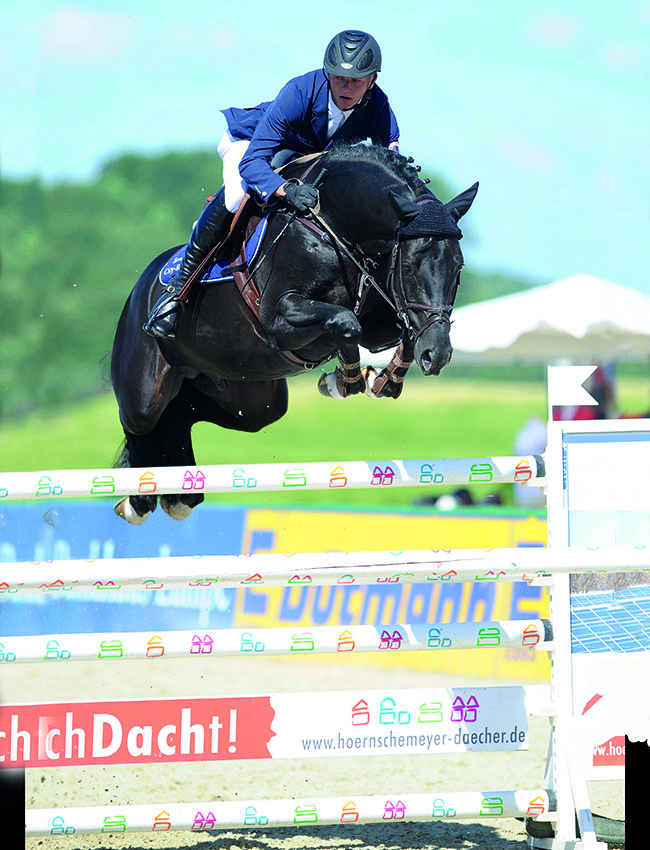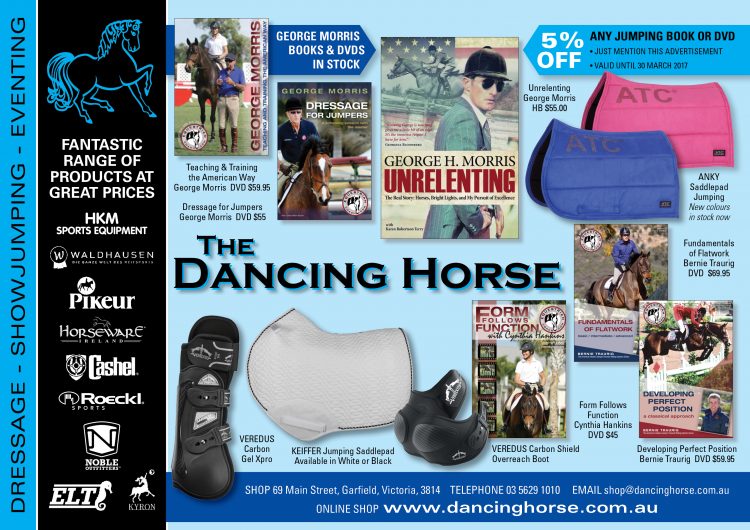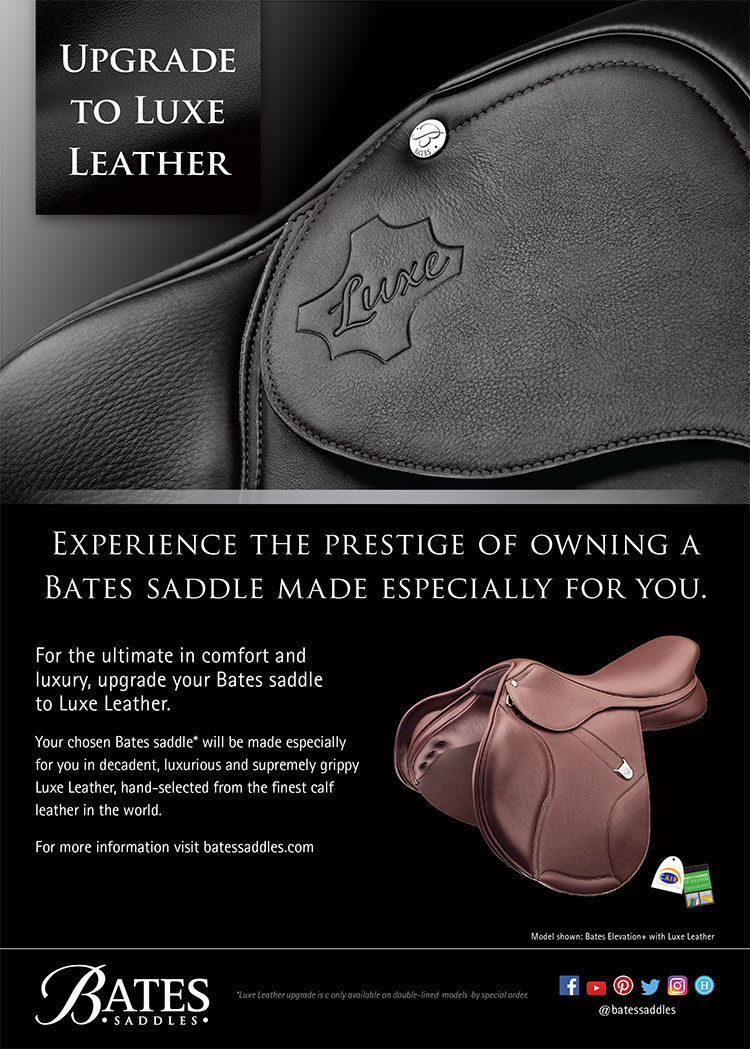
Watching George Morris teach, I am struck by the irony that George could so easily be dismissed as some hopelessly old fashioned, out-of-date, romantic. George is un-ashamedly devoted to the past, to the teachings of the great horsemen who have gone before, and a champion of the values, personal habits and even, dress code, of a bygone elegance…
There’s just one problem in any attempt to dismiss the George Morris creed as old hat, and that is: that there can be no doubt that George Morris is the world’s greatest jumping coach, and that an extraordinary proportion of the world’s most successful riders have been – or still are – his pupils… The Australian riders smart enough to seize the opportunity to work with him at two clinics organized by his long time friend, Vicki Roycroft, soon learnt just how special the great man is.
George himself embodies the sport of showjumping. He came onto the scene in the 1950’s and rode with and against the great riders in the first years of the sport: d’Oriola, the d’Inzeo brothers, Winkler, et al. He was also heir, thanks to his personal guru Gordon Wright, to the great American tradition of thinking about jumping and jumping riding which again, linked back to the French cavalry school of Saumur, and from there back to Caprilli and the Italian school at Tor di Quinto. A graduate of the uniquely American system of hunt seat equitation, George literally wrote the book on the subject: Hunter Seat Equitation, which still the definitive text.
Classical means being with the classic seat. In my view, such a seat must be a versatile one, one which can enable a rider to have a comfortable hack through the country, go fox-hunting, show a hunter, or ride in a hunter seat equitation class, ride a dressage test (with a longer spur), or an open jumper class (with a shorter stirrup). With this seat the rider should be safe, secure, have a good style – and most important of all – be versatile.
(George H. Morris, Hunter Seat Equitation, Introduction)
At the age of seventy, George Morris shows no signs of slowing down, and after guiding the American team to a gold medal at Hong Kong, he has signed on for another term as Chef d’Equipe for the Americans as they aim to take their first ever World team championship on home ground – Lexington, Kentucky.

Next George works with a group of Australian riders
The first session I sat in on, was the lowest level group, with a good proportion of far sighted eventers: Sam Fasher, George Sheridan, Aaron Moyes, Jess Mitchell and Harriet Gruen, along with showjumpers, Sophie Miller, and mine host, Vicki Roycroft riding a five-year-old Dutch gelding, Welsom (by Riverman).
As George remarked in a later session, in his system there are no greys – black is black and white is white, and you do everything right: every keeper in place, every buckle on precisely the right hole, but more importantly, the rider must be in the correct position all the time, thinking all the time, riding each and every step with a clear goal in mind. There is no time for hacking or day-dreaming on horseback in the world-according-to-George.
The first problem George set about tackling was the tendency of most of the horses in the group to bulge over the shoulder going through corners. At every corner, the riders were to slightly open the outside rein, take their outside leg back (just a little!), and push with the inside leg, and with the inside – indirect – rein. They were to be: ‘Scrupulous Corners.’
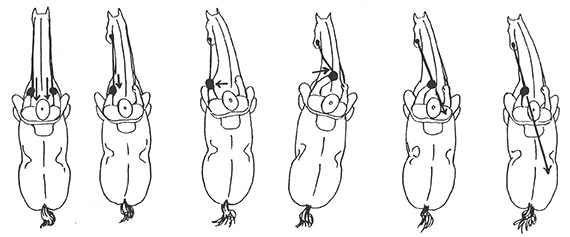
Here’s George’s Rein Aid diagrams from his book, The American Showjumping Style – Left to right: Direct Rein Pics 1 and 2, stopping and turning, Opening or leading rein Pics 3 and 4, Neck rein or bearing rein, Indirect Rein Pics 5 and 6, in front of the withers and behind the withers.
“The opening rein goes out to the side and the horse turns his head, open wide for a green horse, with the older horse just slightly. There are two sorts of indirect rein, one in front of the withers, one behind the withers. The indirect rein displaces the weight of the horse’s shoulders. The indirect rein to the rear of the withers is more complicated.”
But while George is tough on the riders, he is also a real horseman, and was quite happy to let Harriet Gruen canter around to settle her hot Thoroughbred while the rest of the group was working in walk. “That’s the first discipline of a horse, go forward, that’s the beginning of the submission of a horse’s brain, go forward, just keep doing what you are doing Harriet, he’s a blood horse, take your time.”

It was also time for a little discipline of the riders: “It is impossible to teach – you don’t listen, you don’t listen, you don’t listen. I should tell you something simple, once.”
The riders were to execute half turns. First opening the inside rein, with the outside rein pushing the shoulder, assisted by the outside leg. “When I say ‘left turn’ look left, open the left hand, and your outside right hand goes towards your left hip. Both hands go to the inside and you help the horse with the outside leg.”
next George rides
George prepared to ride Aaron’s horse, Diamond B Crackerjack:
“This horse has a very prominent wither and a slightly hollow back. You need to push from the back to the front, to bring his back up…” But first, the martingale was too short. “You have to get the concept of pushing the head down not pulling the head down. The first principle of bringing a horse’s head down is to teach the horse that he can’t get his head higher than your hands. I won’t lower my hands until he lowers his head.”
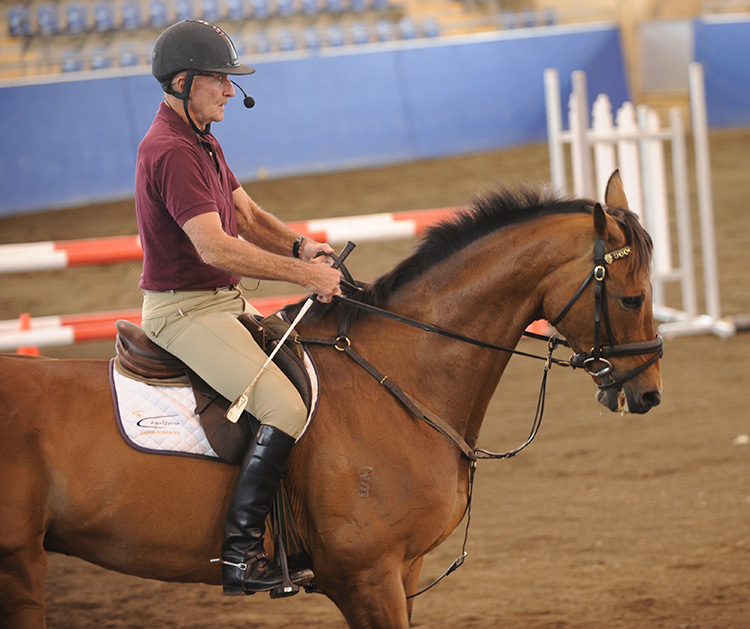
By now George was demonstrating as well as lecturing. “This is a horse with natural impulsion, you don’t have to push him much at all. He pushes his head down because he has wonderful Thoroughbred impulsion. Now shorten the rein and take contact. If he resists, you resist by closing your fingers. Keep the contact in a straight line, subtle but definite contact. Now he’s starting to chomp and flex his lower jaw, giving to the bit in a natural way. You have to watch that he doesn’t drop the bit and creep behind you. That’s over flexion. Don’t be afraid of contact, you have to be able to touch him. This horse is not used to contact because you don’t touch him. Aaron rides nice and loose but he is a bit of a compromiser, he doesn’t take contact with his seat or hand.”
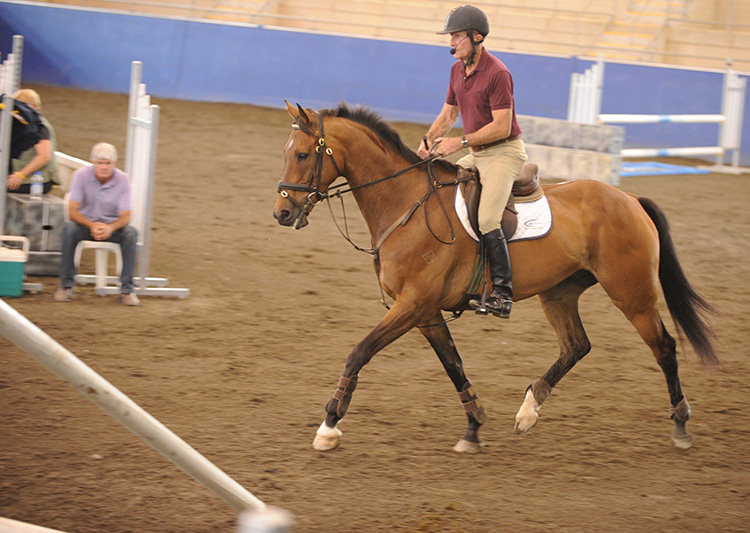
“Oh they have tricks your horses.” (By now George is riding and chuckling to himself) “They don’t touch them, they don’t touch them. If I don’t ask this horse, he’s okay, if I ask him, he’s got an attitude – with tricks.”
Moving on from the work of the corners, George wanted to continue working on teaching the riders to lighten their horses’ shoulders. And for this, there were two exercises: turn on the forehand, and leg yielding.
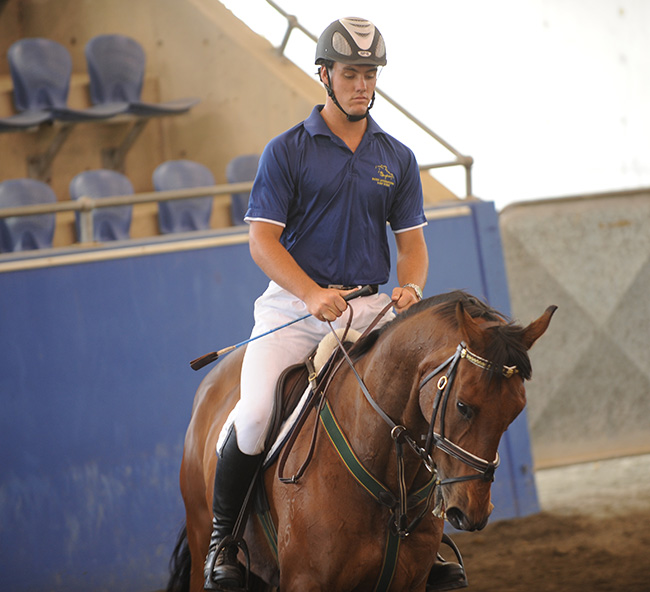
All this walking around has a purpose – and the purpose is that the horse jumps better.
“Jumping is riding. Jumping is schooling. The basic principle is pressure – discipline, lack of pressure – reward. They don’t want sugar or carrots, what they want is lack of pressure. If the horse is against my legs three pounds, then my legs are three pounds against him. He lightens, I lighten.”
Sensing or seeing a fence is so simple that people complicate it, think about it too much, and consequently, ruin it. One is galloping to a fence – any fence; he senses or see a good stride and moves up to ask his horse. On the other hand, he sees that the distance is too long; he waits, and there appears another, more comfortable distance. When one comes to a half stride, or in-between-stride, a quick decision has to be made: leave out a stride or add one. If one could generalize I’d say leave it out at speed or in jump-offs, but add a stride when going slowly.
George Morris, The American Jumping Style
The riders were now to bounce the rails set out on the long side of the arena, walk, pick up counter canter and proceed through across the short side and through the corner in counter canter. This again, occasioned major problems:

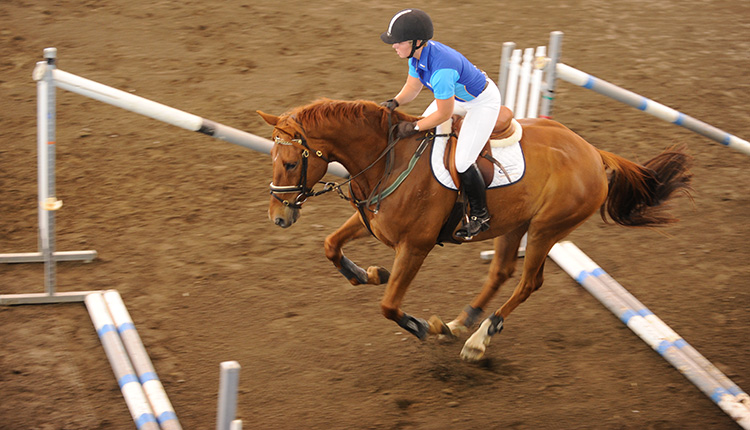
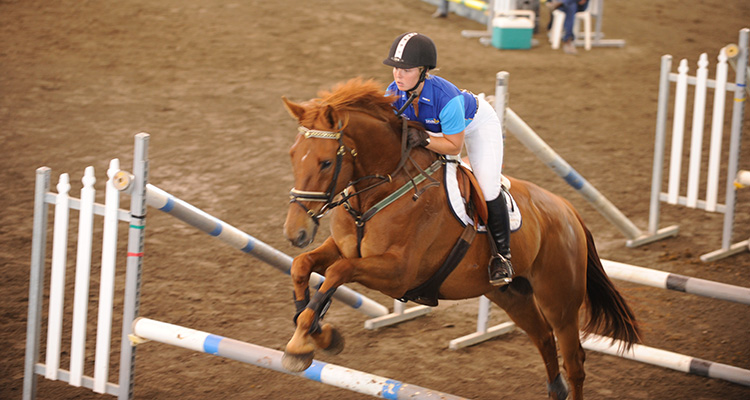
“STOP this sawing of your horse’s mouth. Be tactful to teach counter canter, not spurring and rough. Just think you want the canter, have tact – that’s equestrian tact, the most important quality of them all. You mustn’t jump your horses, you must school your horses. Thoroughbred horses are the best, but they are hot, they are blood horses, teach your horse after the excitement of the jump to calm down. You have to GIVE with your hands, don’t spread your hands and drop them; close them and squeeze like a lemon. With horses you should expect very little and when you get something, be very appreciative. For the canter depart, wait for the horse, wait for the horse, you have to feel a slight displacement of the haunches, displacement to the left, and you get the left lead. There’s a popular belief that the rider’s outside leg goes right back – but it’s not right, the outside leg goes back just a trifle. Be clever and your horse will be clever. This exercise is just to get obedience, to put the horse to the aids.”
Poor Sam Fasher cops the acid edge of George’s tongue…
“You so stiff and constipated in this country, you need laxatives, you’re a good kid, but you are as stiff as hell on a horse. This is a great horse, but let him out of gaol.”
Okay, let’s get jumping: “When you jump, distance is a choice. The first distance is a little long, the second is a little short, that’s your judgement – and most people have none. Watch the fence and the distance will hit you.”
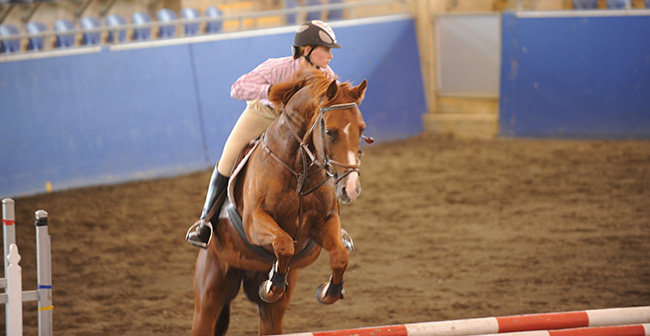
“Sensing or seeing a fence is so simple that people complicate it, think about it too much, and consequently ruin it. One is galloping to a fence – any fence; he senses or sees a good stride and moves up to ask his horse. On the other hand, he sees that the distance is too long; he waits, and there appears another, more comfortable distance. When one comes to a half stride, or in-between stride, a quick decision has to be made: leave out a stride or add one. If one could generalize, I’d say leave it out at speed or in jump-offs, but add a stride when going slowly.” (George Morris, The American Jumping Style, p 93)
And it all comes up right for said Sam, and George is righteously impressed: “Sam’s got it. There is a God, there is a God. There IS a God.”
“For the horses that drift to the right, turn left, for the horses that drift to the left, turn right…this is a very complicated sport. You get your horse straight by turning him. This gets your horse supple and straight. It’s called circles…”
Poor George Sheridan is the next to feel the lash: “Don’t sit too deep on that fat arse of yours…”
So the exercise goes jump a little fence, circle left around the jump, on to the next fence, circle right around the jump, on to the next fence, circle left around the jump and take the last fence on a curving line.
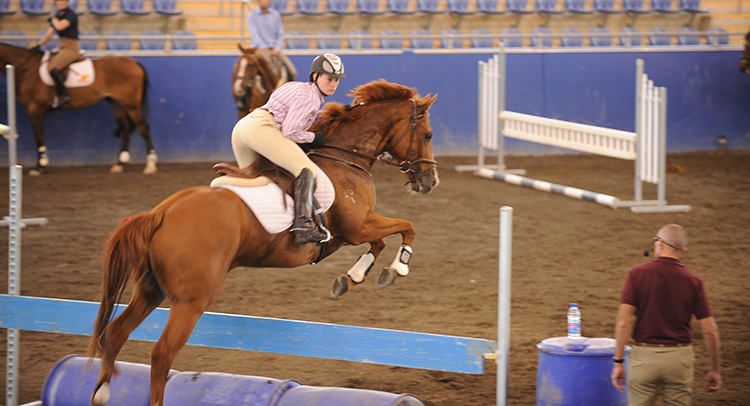
Again everything has to be done correctly:
“Not such a short rein, that’s a death grip, that’s for your girlfriend, not your horse. People, there’s a virtue in light hands. This horse jumps you back, a shorter stirrup will keep you more over the horse’s back. Put half holes in your stirrup leathers, but a fraction short is preferable to too long. Keep your thumb on the top of the rein, don’t wrap it around, or it will slip. This is practising precision, repetition, practice, precision.”
George feels that to understand correct position, you also need to understand the wrong way to do it, and drills his riders on the ‘three upper body excesses: duck, drop back, get ahead.’ First demonstrating these faults himself…
“It all starts with understanding the position of your hand, and contact, because your horses don’t have mouths. You have to be able to touch a horse’s mouth. These are probably the worst mouthed horses as a group I’ve sat on.”
Next the riders were asked to demonstrate upper body excesses on command from George. Vicki’s demonstration is so good at being bad, that she gets a round of applause from the spectators.
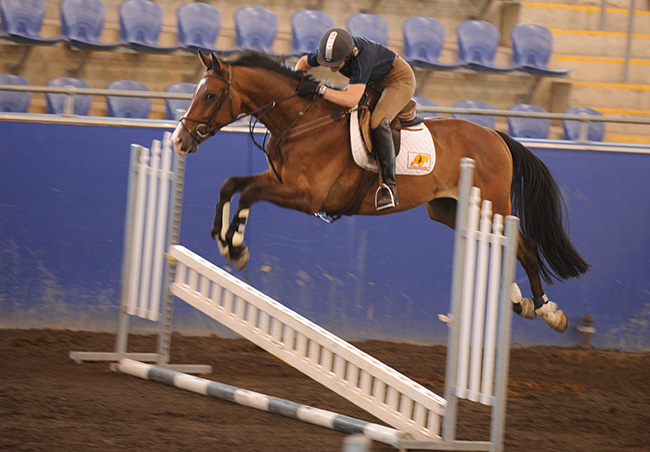
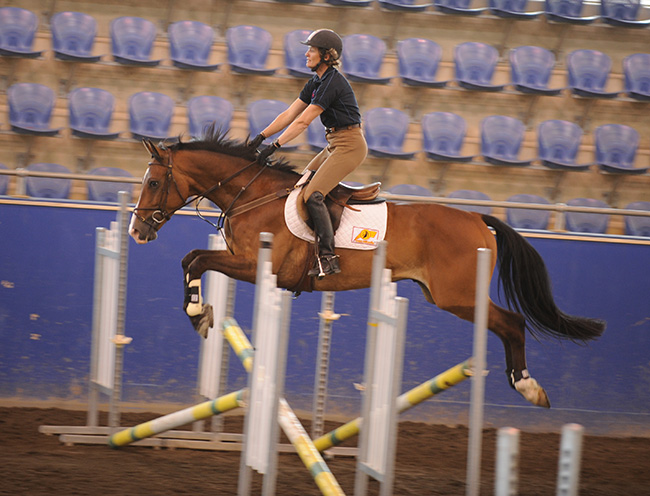

Of the group, it is Jess Mitchell who is singled out for praise. “This is very good upper body control, you have a very quiet upper body.”
And at the end of it, George is concerned for the comfort of the horses. “This has been a very intense three day clinic. I’d give the horse a packet of bute at night and don’t jump them again for at least a week, for the older horses, wait a week later.”
And the final coda is again on position: “You’ve got to be concerned with the details, and you’ve got to start with position. I picked out Beezie Madden, Eric Lemaze and McLain Ward because of their position. When your seat is in the correct place, you can talk to your horse with pressure or lack of pressure.”
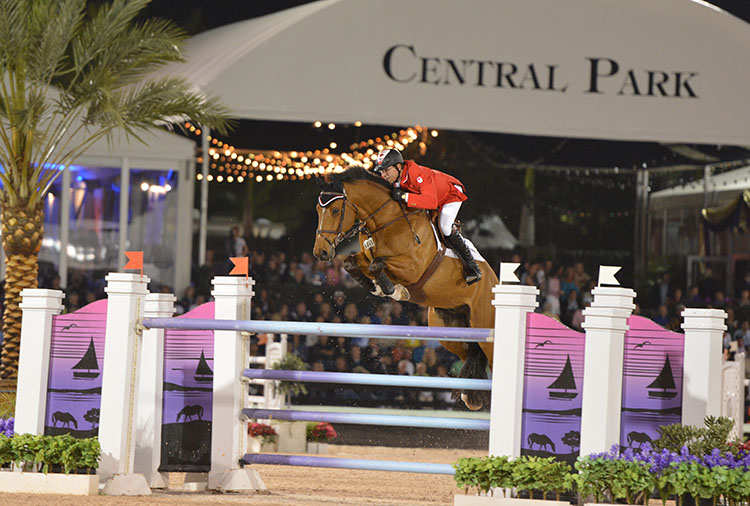
Position and contact: “Horses have to have a mouth. Look at Ian Millar – mouth, mouth, mouth. Here you don’t take contact seriously. You have to study contact.”
“Your horses are sloppily ridden. Upper body faults are unsightly, but worse, they distract a horse. You have to stay over the horse’s back, or you will get hind end faults. Everything that is ugly adversely affects the way your horse goes.”
And a final word for the boys: “You boys keep jogging and watch your weight.”
Jess Mitchell – effective riding style
Jess Mitchell is George Morris’ favourite style of rider – an educated rider. While some of the others struggled with what should be basic exercises, Jess seemed to find them easy and found the experience of working with George so useful, that after riding at the SIEC school, she found time to sit each day in the spectators’ gallery at Mount White. She found she learned almost as much, just sitting and watching, but it was riding her horse in the clinic that was the real buzz:
“It was fantastic. He’s very open to improving the horse through improving the rider. I think he enjoys improving the horse and looking at the rider’s progression over the three days. I found that I rode 1000 times better on the last day than I did on the first day. Not through anything major, just the little things being perfected.”
Tell me a little about your horse…
“Native Stanza, I got him as a five-year-old, but he had done nothing. He is by Raise A Stanza. I’ve just been taking him up the grades, he’s one star nearly ready to go two. He was bred and meant to race, but never got round to it. He was registered but never raced, so he’s got a good brain through that. He is a lovely quiet, gentle, really willing to learn sort of horse. I’m pretty excited about him actually. He is so easy and uncomplicated, it’s nice to have one like that for a change. I think he is planning on going two star this year.”
Some of the horses in your group had big problems with simple things like turn on the forehand, but your guy was sweetly into your hand and taking the leg and the aids…
“It’s nice to be able to start a horse yourself without complications. I think it just makes the team working together lots easier, you understand down pat exactly what your aids are and he goes ‘alright, I know exactly what to do’. He learns very, very quickly. He only learnt flying changes a week and a half ago, and finds them so natural and easy. With his jumping, he just needs lots of confidence, by the third day of the clinic he was jumping so much more confidently than the first day. I think he learnt a lot from the clinic, I have too.”

You sat through the Mount White schools, watching?
“I was going to ride, but I thought my horse had done enough over the three days, and I think I’ll learn as much watching and listening as I did riding. I think it is just great that George Morris is out here in Australia, and I don’t want to miss the experience.”
Want to breed yourself a top showjmper? Check out Diarado by Diamant de Semilly. He’s available from IHB – www.ihb.com.au
